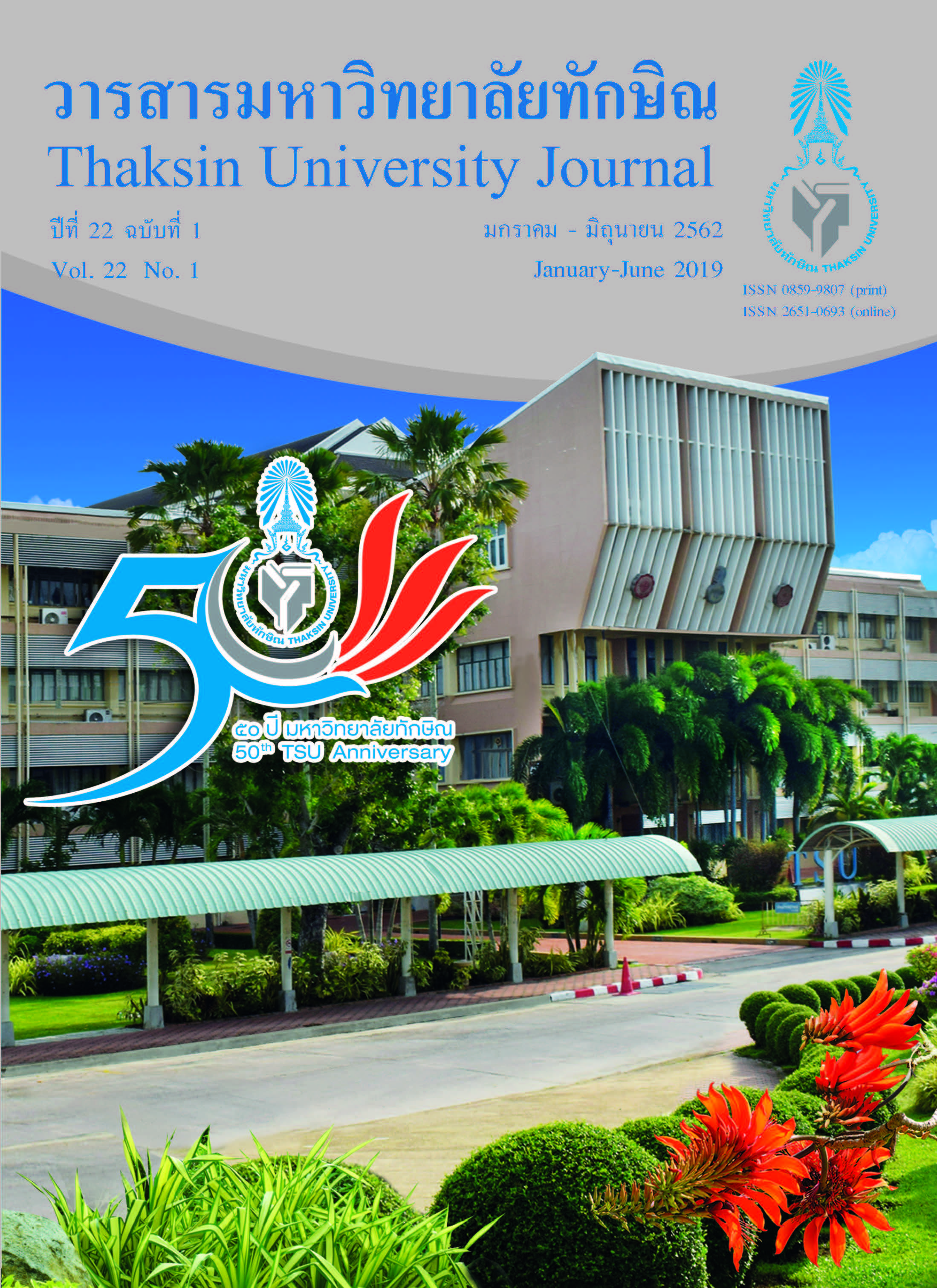Tropical Rain Forest Community after Razing Rubber Tree on Land Encroachment in Khao Lak - Lam Ru National Park, Phang Nga Province
Main Article Content
Abstract
This research aimed to study the similarities of plant succession areas and natural succession trend
compared to the tropical rain forest in the area. The results showed that the tropical rain forest had 158 species. Natural succession forest in 2003, 2012 and 2014 had 75, 47 and 8 species, respectively. The diversity index of tropical rain forest was of 4.29. Natural succession forest in 2003, 2012 and 2014 were of 3.52, 3.17 and 1.05, respectively. Diameter at Breast Height (DBH) distribution of trees in tropical rain forest and natural succession forest stands were negative exponential form, indicated that the forest regeneration showed normal situation. The above-ground biomass of tropical rain forest was 274.29 ton/ha. Natural succession forest stand in 2003 had the greatest above-ground biomass at 61.99 ton/ha (22.60 % of tropical rain forest) followed by natural succession forest stands in 2012 and 2014 at 5.95 and 1.73 ton/ha, respectively. In this study, it could be concluded that if do the razing rubber tree on land encroachment and release natural succession, to stand can be developed to become a natural tropical rainforest in the future.
Article Details

This work is licensed under a Creative Commons Attribution-NonCommercial-NoDerivatives 4.0 International License.
References
Destruction, Trespassing of Public Land and Sustainable Management of Natural Resources.
Ministry of Natural Resources and Environment. Bangkok.
[2] Curtis, T. I. T. (1959). The Vegetation of Wisconsin: An Ordination of Plant Communities. University of
Wisconsin, Madison.
[3] Magurran, A. E. (1988). Ecological Diversity and Its Measurement. Croom Helem, London.
[4] Sorensen, T. (1948). A Method of Establishing Groups of Equal Amplitude in Plant Sociology Based on
Similarity of Species Content. Biologiske Skrifter, 5(4), 1-34.
[5] Ogawa, H. K., Yoda, K., Ogino., & T. Kira. (1965). Comparative Ecological Studies on Three Main Types
of Forest Vegetation in Thailand. II. Plant Biomass. Nature and Life in Southeast Asia, 4, 49-80.
[6] Faculty of forestry. (2001). Khao Lak - Lam Ru National Park Phang Nga Province Management Area
Master Plan Project. Kasetsart University, Bangkok.
[7] Marod, D., & U. Kudin. (2009). Forest Ecology. Faculty of Forestry Kasetsart University, Bangkok.
[8] Maneerat, S. (1999). Natural Plant Community Succession in Thung Yai Naresuan Wildlife Sanctuary the
Eastern, Tak Province. Wildlife Conservation Office, Department of National Park Wildlife and
Plant Conservation, Bangkok.
[9] Barbour, M. G., J. H. Burk., & W. D. Pitts. (1987). Terrestrial Plant Ecology. The Benjamin Cummings
Pub. Comp. Inc., California

